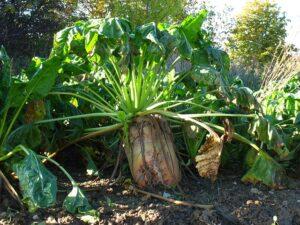The sugar beet sector can move in a positive direction by improving production conditions
Although the domestic sugar beet cultivation area has decreased significantly in recent years, there has been no decline in the quantity produced due to the increase in sectoral commitment and the expansion of professional knowledge. The future of the domestic sugar sector would be greatly influenced by much closer and more flexible cooperation between the sugar factory and the producers.

(Photo: Pixabay)
The sugar beet harvest in our country may start later than usual this year. The sector has been significantly transformed by joining the European Union, but climatic factors and changes in consumer preferences also have a major impact on cultivation, which is also reflected in the development of the size of the cultivation area. The national subsidized sugar beet area in 2025 can be 11,210 hectares. The estimated average yield is 50 tons per hectare, which is relatively low and falls short of the 5-year average, but due to the later-than-usual harvest, the average yield may still increase due to the favorable September weather. A positive trend has been observed in the development of sugar content during the measurements so far, and producers expect an improvement of 1-3% compared to previous years.
Domestic production only provides 30% of consumption, the remaining part is replaced by imports
This shows a small decrease, but the lower price of imported products and the oversupply also have a negative impact on profitability. The size of the production area has been continuously reduced in recent years, but the amount of sugar beet produced has not decreased, as the average yields have increased significantly due to the increase in sectoral commitment, the expansion of professional knowledge and the guidance and advocacy of interprofessional organizations.
However, the sector still faces many challenges
The biggest problem is rainfall conditions, but the influence of the market environment is also significant. The development of the production area is largely determined by the price known to producers. In addition to the low purchase price, in many cases sanctions due to quality problems, late delivery times and increased logistics costs also reduce producers’ incomes. Successful farming cannot be achieved without production-linked support.
Farmers must also pay increasing attention to plant protection
Effective weed control is becoming an increasingly serious challenge due to the narrowing of the range of active ingredients available and the emergence of resistant weeds. Varieties are susceptible to pathogens to varying degrees, which increases the value of variety selection. In addition, crop rotation, avoiding nitrogen overdose, the use of antagonists, irrigation, pest control based on forecasting, and earlier harvesting and processing in areas at risk of infection can also play a role in success.
Although production requires significant investment and involves high risk, the future of the sector could shift in a positive direction with more favorable production conditions and improved producer morale
This requires much closer and more flexible cooperation with the sugar factory: multi-year producer contracts, the introduction of a minimum price, a higher contribution to logistics costs, the application of additional payments, the standardization and control of certification, and the minimization of sanctions. This would not only stabilize, but also increase domestic production, which ensures the input material needs of our only sugar factory. However, without these factors, a significant reduction in area is expected by 2026.
NAK
Related news
EU Council approves changes to agricultural rules to boost competitiveness
🎧 Hallgasd a cikket: Lejátszás Szünet Folytatás Leállítás Nyelv: Auto…
Read more >Thousands of farmers protest in Brussels against EU-Mercosur agreement
🎧 Hallgasd a cikket: Lejátszás Szünet Folytatás Leállítás Nyelv: Auto…
Read more >The government is giving special support to irrigation development
🎧 Hallgasd a cikket: Lejátszás Szünet Folytatás Leállítás Nyelv: Auto…
Read more >Related news
How do young adults celebrate?
🎧 Hallgasd a cikket: Lejátszás Szünet Folytatás Leállítás Nyelv: Auto…
Read more >Vajda-Papír celebrates Ooops!’s 15th anniversary with a hybrid AI campaign
🎧 Hallgasd a cikket: Lejátszás Szünet Folytatás Leállítás Nyelv: Auto…
Read more >Pre-holiday shopping at up to half price
🎧 Hallgasd a cikket: Lejátszás Szünet Folytatás Leállítás Nyelv: Auto…
Read more >






